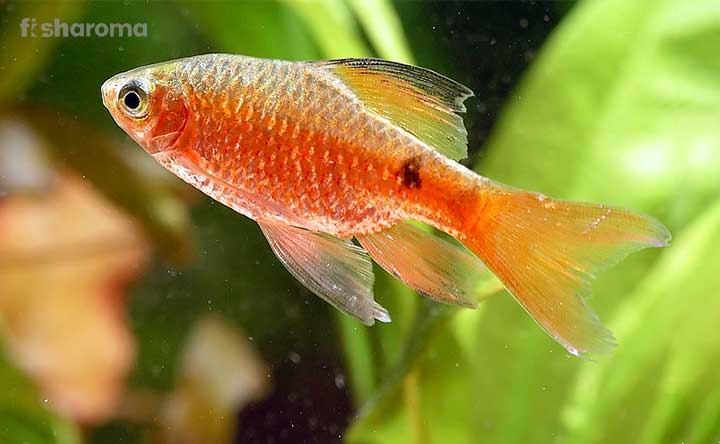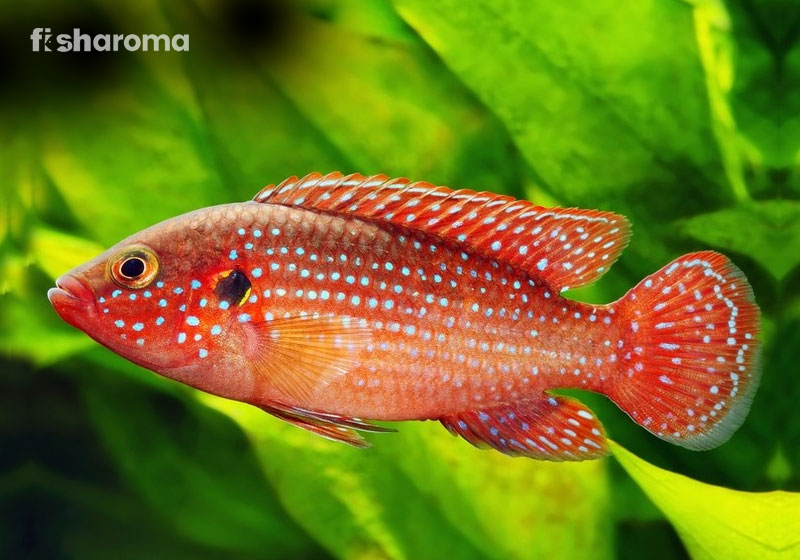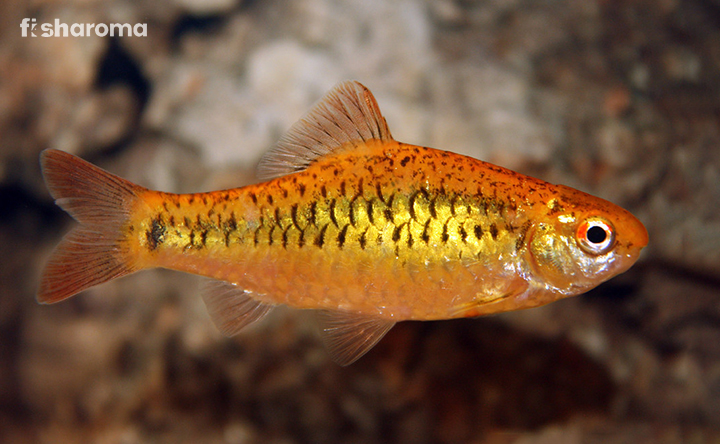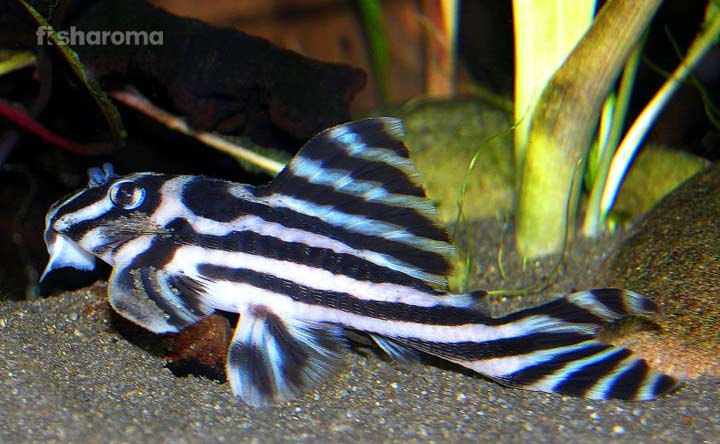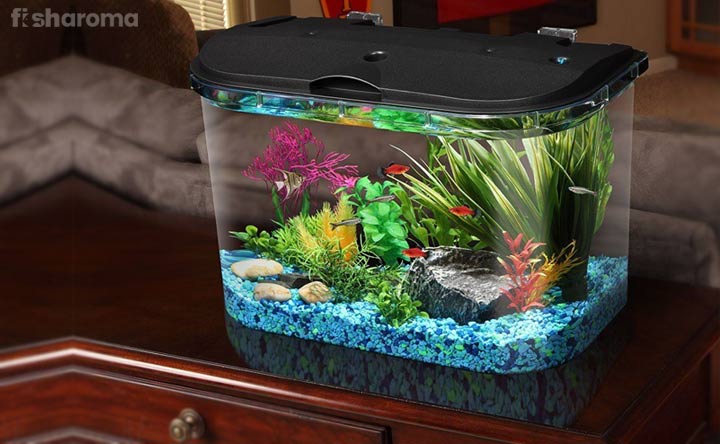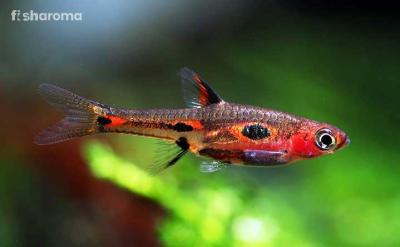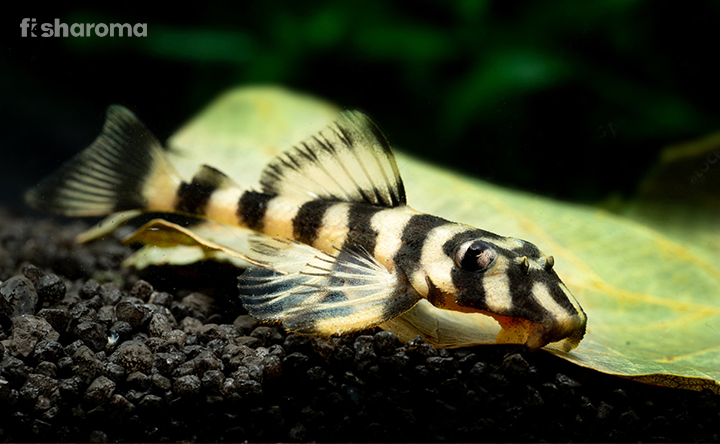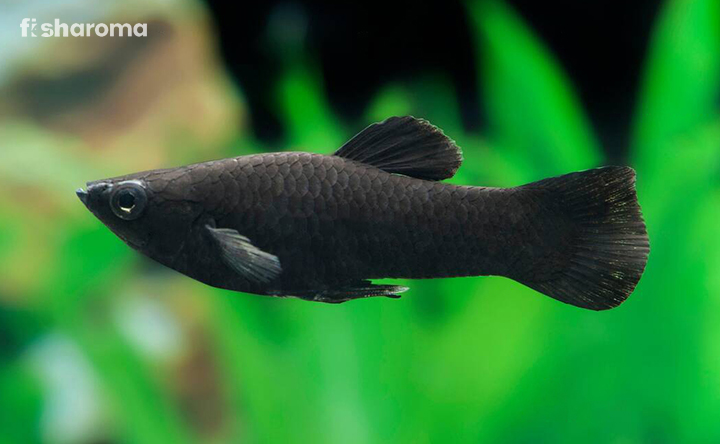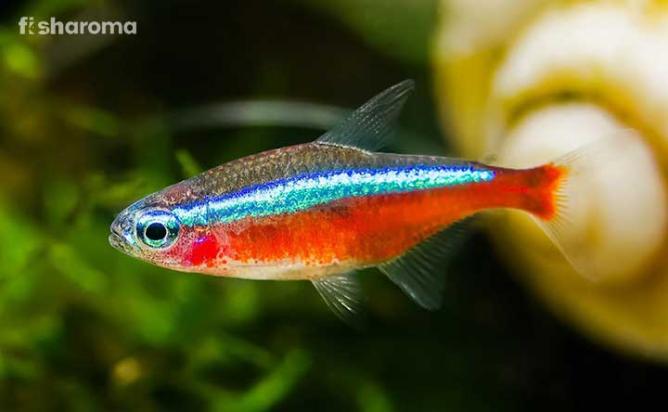Silver Dollar Care Guide – Lifespan, Diet, Tank Requirements and More

An ideal choice for those who are looking to expand their collection of fish by bringing home a school of fish that are peaceful by nature and magnificent by appearance, Silver Dollar fish are the classic examples of the “simplicity is the best” phrase. This is because of the fact that despite having a very simple, as some would say, a basic look, they can brighten up an aquarium when a group of them are kept together, as they resemble a bunch of large silver coins in the water.
So come, let’s find what does it take to pet them.
Key Specifications of Silver Dollar
Before we dive into the world of Silver Dollar fish, let’s get a sneak-peek into some of their key specifications.
| Scientific Name | Metynnis argenteus |
| Family | Characidae |
| Origin | South America (Speculated) |
| Size | 6” (15 cm) |
| Color | Silver |
| Care Level | Intermediate |
| Lifespan | 10 Years |
| Temperament | Peaceful |
| Compatibility | Low |
| Tank Size | 75-Gallons |
| Diet | Omnivore |
Overview
A member of the Characidae family, which Piranhas are also members of, the Metynnis argenteus are a freshwater species. They are commonly known as Silver Dollars and are peaceful by nature, unlike their ferocious and highly-aggressive relatives. They are a hardy species that prefers living in a school.
If we breakdown their scientific name, we will get an idea of their appearance. The first part of their scientific name – which is the genus or generic name – ‘Metynnis’ means ‘with plowshare’ referring to their laterally flattened body, while the second part of their scientific name – ‘argenteus’ translates to ‘covered with silver’.
Remember, the name Silver Dollar is given to a bunch of Metynnis species, but we are specifically talking about Metynnis argenteus here.
Origin & Habitat of Silver Dollar
It is believed that Silver Dollars have originated from South America, although it hasn’t been backed by conclusive reports. Still, their origin has been deduced from where they are mostly found, which are the Guyana, Peru, Amazon east of Rio Negro, Paraguay, and the Tapajós River in Brazil.
The water that they reside in is usually dark and filled with thick vegetation. You will also see an abundance of gravels, rocks, driftwood, weeds and peat in their surroundings. They can be seen in small, heavily-grown tributaries and rivers with moderate current flow.
Appearance of Silver Dollar
Having a round disc-shaped body that is laterally compressed, Silver Dollars have a flat and board tail fin. Sexual dimorphism is pretty obvious in them. The anal fin in males is longer than in females. They may look ordinary, but the beauty that they create when a bunch of them are kept together is extraordinary.
Size of Silver Dollar
Juveniles are around 1” (5 cm) while adults can reach a size of 6” (15 cm).
Color of Silver Dollar
Apparent from their name, they are silver in color, with a slight green or blue or red tint. This silver color makes them look like an old silver dollar. Some variants of Silver Dollars have small dots on their sides. Coming back to sexual dimorphism, the anal fins are edged in red in males.
Metynnis hypsauchen are also known as Silver Dollars. The only difference between them is and Metynnis argenteus is that Metynnis hypsauchen have black patches behind their eyes.
Behavior of Silver Dollar
Silver Dollars are peaceful species that are active swimmers. Due to their schooling nature, they need a large area for swimming. When kept alone, they are likely to become reclusive. They also need a lot of hiding spots in their vicinity. They are easy to get startled and can often be seen jumping because of it.
They are pelagic species, which means they spend the majority of their time swimming at the top-most part of the water.
The only time they get aggressive is during feeding where they can be seen chasing one another in the tank.
Lifespan of Silver Dollar
Silver Dollars are one of the longest living freshwater aquarium species, living up to almost ten years in captivity.
Diet of Silver Dollar
Silver Dollars are an omnivorous species whose diet is dominated by herbivorous food. This is why they reside near thick vegetation in the wild. Occasionally, they can be fed carnivorous food as treats, but remember, that shouldn’t be on a daily basis.
An underlying aspect of their vegetation-domination diet is that it curbs the population and growth of algae since algae are also dependent on the same food source for their nutrition needs. By cutting off the food source of algae, Silver Dollars make sure that there aren’t any algae infestations in their vicinity.
In the wild, they graze on plants continuously, much like how a cow grazes on grass. We suggest feeding your Silver Dollars twice a day. The vegetables should be ideally blanched or boiled to soften them up. As for the quantity of food that you need to serve them, make sure you provide them that much food that they can consume within three minutes or less.
An ideal diet of Silver Dollar should consist of the following items:
- Lettuce
- Blanched cucumbers
- Blanched peas
- Boiled spring greens
- Blanched carrots
- Cress
- Zucchini
- Squash
- Chickweed
- Spirulina
- Spinach
- Boiled potatoes
- Fruits
- Bloodworms
- Brine Shrimps
When it comes to flakes and pellets, you can feed the following:
When feeding them in a community tank, please watch over them when they eat, as chances of other aggressive and larger species eating their foods are high.
Tank Requirements for Silver Dollar
While building a home for your aquatic pet, it is very important to mimic their natural environment as much as possible. To do that, you need to keep in mind the following aspects.
Tank Size
Despite their moderate size, you would need a large tank (75 gallons) for Silver Dollars. This is due to the fact that they are schooling fish and need to be kept together in groups. Therefore, for keeping five of them together, you would need a 75-gallon tank.
If you want more than five in your tank, you need to provide 10 gallons for each fish added. Please ensure that they have a lot of open space for swimming.
Tank Lid
As we stated above, they are easy to get startled and jump as a result of it. Therefore, you need to provide a firm lid to the tank they reside in. Maintain a gap of 6” (15 cm) between the water surface and the tank lid to make sure they don’t hit the lid while jumping.
Substrate
While picking the substrate for your aquarium that hosts Silver Dollars, go for dark gravels. Please ensure that the gravels are toxin-free and that they don’t have any sharp edges to them.
Filter
Silver Dollars need well-oxygenated clean water that has a moderate flow. Therefore, you need to invest in a good filtration system. An air-powered sponge filter seems suitable for them.
Nature of Lighting
You need to take into account the type of lighting that your pet fish is used to. In case of Silver Dollars, their environment is naturally dark. Thus, keep a subdued lighting system in their tank. There have to be shadowy areas in your tank where your Silver Dollars can retreat to.
Presence of Flora
Since the primary diet of Silver Dollars is plants, therefore you need to be cautious about the kind of plants you need to keep in your tank. Thus, try to keep plants that are usually not eaten by fish due to their bad taste, such as Hornwort and Java Fern. Don’t keep any delicate plants since they are known to uproot them.
You can also use artificial plants if you don’t want to deal with the care and maintenance of live plants, but make sure they are not made of toxic materials.
Java moss and floating plants can be used during their breeding, more of which we will discuss in the ‘Breeding of Silver Dollar’ section.
Ornaments
Silver Dollars love to hide. Therefore, provide non-sharp rocks, castles, and caves without overcrowding your tank. You can also include driftwood in their tank and add in peat to make the water resemble as close to their natural habitat as possible.
Cleaning Method
We recommend you clean the tank every 3-4 weeks. For cleaning the tank, transfer the water and fish to a bucket and cover it up. Next put the substrate and ornaments under clear running tap water. Use a soft cloth to wipe off the interior walls of your tank with lukewarm warm. Avoid using chemical-based or soap-based products as much as possible since their residues are harmful to your pet.
Water Type for Silver Dollar
If the parameters of water are not maintained, then it may adversely affect the health of your pet fish. For Silver Dollars, the water that you need to provide should meet the following requirements:
Temperature
The ideal temperature of the tank water should be 75-82° F (23-27° C).
pH Level
Silver Dollars prefer slightly acidic water with a pH level of 5.5-7.5.
Hardness
Try and provide soft water to Silver Dollars with a general hardness of 4-18 dGH, with 6 dGH (100 ppm) being the optimal choice, and a carbonate hardness of 3 dKH (53 ppm).
Mineral Level
The level of ammonia and nitrite should be 0 while the level of nitrate should be less than 30 ppm.
Replacement Procedure
Regular replacement of water ensures the eradication of harmful bacteria from the tank. When tank water is not replaced over a prolonged period of time, harmful substances such as phosphorous, nitrate, and other decomposing organic matter also starts building up.
We strongly advise you to maintain regularity in your water replacement pattern. This means you can change your water every seven days or every 15 days or every 30 days. But whatever time duration you choose, try to maintain that.
You shouldn’t replace the entire water content altogether since that would send a shock to the system of your pet. It also would kill off the beneficial bacteria in your tank.
If you want to replace your tank water on a weekly basis, then replace just 10% of it. If you want to do it every 15 days, then replace 25% of the tank water; else if you want to do it on a monthly basis, replace 40% of the tank water.
The new batch of water and the existing batch of water should have the same water parameters in terms of pH level, temperature, mineral level, and hardness.
Compatibility of Silver Dollar
Silver Dollars are quite skittish, and they are not to be kept alone under any circumstances. A minimum of five of them should co-inhabit in a tank. If they are kept alone, they will become more shy and reclusive and will spend almost their entire time hiding. It will also cause a great deal of stress in them.
They are a schooling fish. When they are in each other’s company, they are the happiest. It also makes them feel safe.
Suitable Tankmates for Silver Dollar
Silver Dollars are peaceful fish that are active swimmers. They keep it to themselves and aren’t bothered by the presence of other peaceful species. They spend their time near the water surface. So, it is advised to keep them with bottom-dwelling species.
Some of the idea tankmates for Silver Dollars are as follows:
- Bristlenose Pleco
- Angelfish
- Green Terror Cichlid
- Firemouth Cichlid
- Pacu
- Anostomus
- Giant Danio
- Blue Acara
- Yoyo Loach
- Green Severum
- Nerite Snail
- Bala Shark
- Giant Gourami
Nerite Snails are one of the very few invertebrates that are peaceful and large enough to co-inhabit with Silver Dollars. Most others are eaten away by them due to their small size.
Unsuitable Tankmates for Silver Dollar
Never keep them with tiny species since they would be mistaken as food by them. In addition, do not keep them with aggressive species as well.
The tankmates that you need to avoid keeping with a Silver Dollar are as follows:
- Betta
- Tetra
- Chili Rasbora
- Endler’s Guppy
- Small Gourami
Breeding of Silver Dollar
As long as they have a large and comfortable tank, Silver Dollars are pretty easy to spawn. They usually are seen spawning in shallow waters near heavily planted areas in flooded rivers in the wild.
These fish reach their sexual maturity when they are a year old. Keeping them in groups is helpful because they themselves form in pairs naturally. They are group spawners, however, they can breed in pairs too.
It is advised to keep the pair in a separate breeding tank at the time of breeding. This tank should have 40 gallons of soft warm water with a temperature of 79-82° F (26-27° C), a pH level of 6-7, and a general hardness of 4-8 dGH. In some cases, it has been seen that they spawn at a temperature of 90° F (32° C), although it’s not common.
To facilitate a gentle water flow, install an air-powered sponge filter as well if you want and keep the lighting dim. As we have said earlier, you can keep Java Moss or any floating plants on the water surface as well since it will help in the breeding process.
To encourage spawning, feed them high-quality vegetables and plant matters for 7-10 days.
When the males are ready to spawn, you will see the colors around their dorsal, caudal, and anal fins getting darkened. Females release their eggs on or near the plants, and the males fertilize them.
If not for the plant, these eggs will sink to the bottom of the tank. The eggs are slightly yellow and transparent in appearance.
Although Silver Dollars are not known for eating their own eggs, it is better to remove the parents from the breeding tank at this stage.
The eggs hatch in three days and the fries are able to swim 6-9 days after that. You may feed Infusoria to the fires until they are large enough to eat large food items such as vegetable flake, Brine Shrimp larvae (nauplii), or plankton. They reach their adult size in 6-8 months.
Silver Dollar Diseases
Although Silver Dollars are pretty resilient, it doesn’t mean that they aren’t vulnerable to any infections. Each time you add something new to the tank (be it an ornament or any other species), you are potentially adding a source of infection. This is why quarantining everything you put in a tank beforehand is so important.
Regular water replacement and tank cleaning will also reduce the risk of infections and diseases to a large degree. Providing them quality food and ensuring their happiness and safety by keeping them in groups also helps in lowering their stress. This is important because stressed Silver Dollars are more likely to acquire diseases.
Perhaps, the most common disease that strikes Silver Dollars (just like any other freshwater species) is the Ichthyophthirius multifiliis (Ich) which is also known as White Spot Disease. You can deduce that your pet is suffering from this disease if you start seeing them developing white spots on their fins, scales, or gills. Increasing the temperature of the tank water to 77° F (25° C) would help in killing the parasites responsible for this infection. Still, we suggest you take veterinarian help regardless.
Interesting Facts about Silver Dollar
- A female Silver Dollar can produce around 2,000 eggs during spawning.
- The variant of Silver Dollar that we described in this article (Metynnis argenteus) was first described in the year 1923.
- Over 16 different species are known by the common name ‘Silver Dollars’.
Summary
Silver Dollars (Metynnis argenteus) are peaceful, schooling fish that can be kept in a species-only tank as well as in a community tank. They are easy to bred and their dietary needs are mostly on the herbivorous end. In addition, the tank requirements and water parameters that they need are pretty easy to provide. The spectacular view that they create when they swim together is breath-taking. We hope our care guide has enabled you to prepare yourself better to host them in your home.
Care Guides of Other Freshwater Fish
Take a look at some of our other care guides of freshwater fish.
- Jack Dempsey Fish: Known for their highly-aggressive behavior, they are distinctly colored and live up to 10-15 years, making them one of the longest living freshwater aquarium pets.
- Cherry Barb: These tiny little fish will brighten up the ambiance of your tank with their colorful appearance and intriguing schooling nature.
- Kuhli Loach: An unconventional-looking species, Kuhli Loaches are peaceful, nocturnal beings that definitely would add a unique dimension to your freshwater tank.

